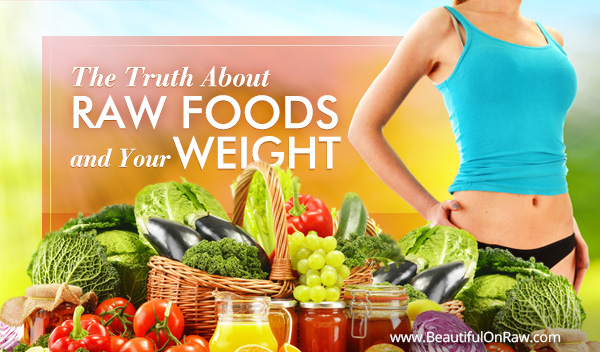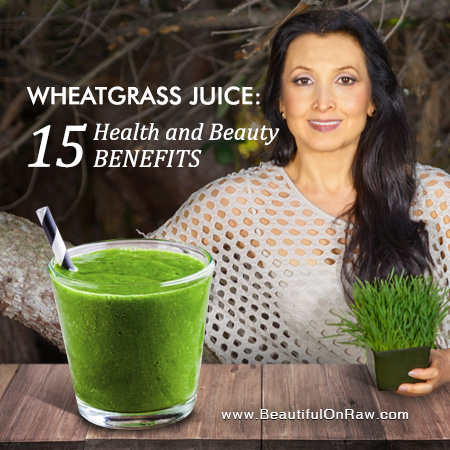The Truth About Raw Foods and Your Weight
Published: (July, 2016)

Do You Know How Raw Foods Affect Your Weight?

Here is a question that I'm often asked: I eat mostly raw, but people say I'm too thin. How can I gain weight without seriously compromising my diet?
We all know the stigma that excess weight carries in our society. But it's no less so with those who are "too thin." Recent tabloid stories on Angelina Jolie illustrate this point all too well. I totally understand what you mean when people comment that you're too thin.
Look at my picture, taken recently. In no way could you describe me as "too thin." Yet I'm smaller (I like to say slimmer) than about 90 percent of women my age. In tops I usually wear M size, and if I want to buy a full skirt I search for XS to fit my waist line.
Here's what's happening... On a cooked food diet, human bodies, with time, get thicker, stockier. Metabolic waste gets deposited in places where it would never appear if you were eating raw. In the book Raw Eating, author Arshavir Hovannessian describes this process as acquiring a "false body."
Think about it. Why on earth do we think a youthful 18 year-old body has to become bigger with age? Whatever "extra" the body acquires on cooked foods cannot possibly be healthy, because with this "extra" we're losing vitality and youthful good looks. Yet society believes somehow you should get wider and thicker with age.
So, here you go: on raw foods you might be healthier than most people, but society is still going to call you "too thin." Now this is not to say that every thin person is a healthy person. No, the arrow of logic doesn't point that way. Far from it.
Want to lose weight? Want to gain weight?
Fo more information read my books.
15 Benefits of Wheatgrass

Whether you want to lose or gain weight, the process must begin with a good, thorough cleanse of your body. The easiest way: Include a daily shot of wheatgrass juice.
Do have a look at my article The 15 Benefits of Wheatgrass. You'll see there that wheatgrass—most commonly consumed in juice form—is a great addition to anyone's health program.
But if you have compromised teeth—root canals, crowns, bridges, or even big fillings—then wheatgrass becomes indispensable!
There’s a definite connection between acidity and gum disease. That’s the valuable insight given to us by a 2001 study, “The relevance of pH to gingivitis and periodontitis.” The study sampled forty-two people. Each had gingivitis or periodontitis or both. Investigators measured pH—the degree of acidity or alkalinity—all around the mouth, and particularly at the specific sites of disease.
The first finding: High acidity (low pH values) correlates with disease locations. The second finding: Within single pockets of disease, pH values ranged from a slightly alkaline 9 to a highly acidic 2, with higher acidity associated with the more seriously diseased tissue.
What we’ve learned: Higher alkalinity means better health in the mouth. Wheatgrass is strongly alkaline—pH 12 to 14. No wonder, then, many testimonials claim wheatgrass juice makes gums feel and look healthier. I’ve included wheatgrass extract in our Oral Balm for just that reason. Try it and see for yourself. 100% satisfaction guaranteed.
Keeping your teeth means taking care of your gums. Wheatgrass definitely helps. More information in my article Gum Disease...What Can You Do?
